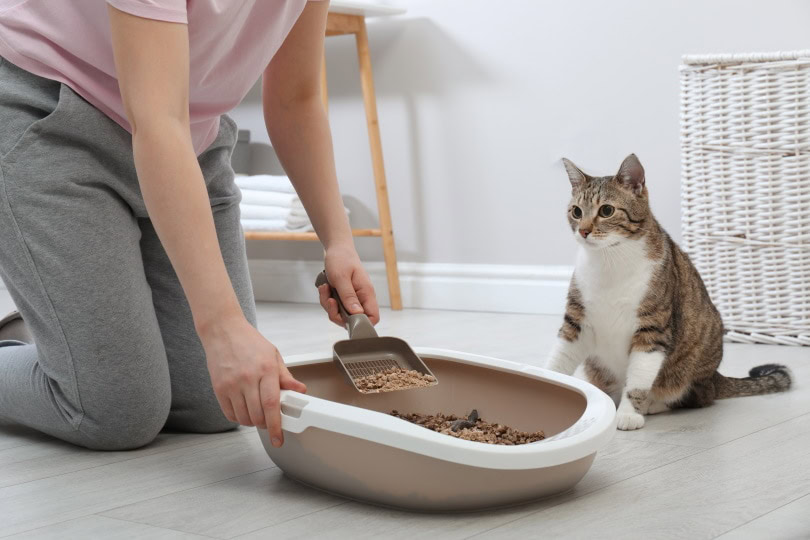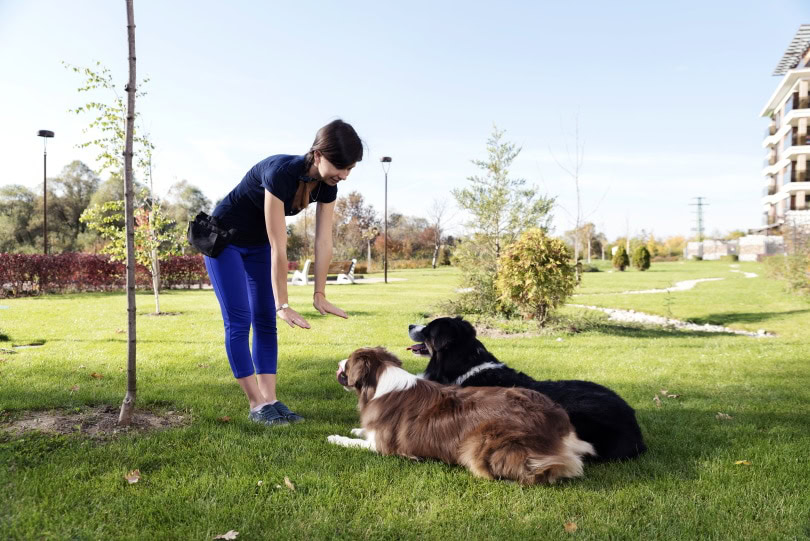VET APPROVED

The information is current and up-to-date in accordance with the latest veterinarian research.
Learn more »Most pet cats are litter trained when they are kittens, and they take to the process quickly and fairly smoothly, although there will always be accidents along the way. If you’ve adopted an older cat and it has never been trained to use a litter box, you may be wondering how to train an older cat to use a litter tray. The process of litter training an adult cat is basically the same as training a young kitten, but you might need more patience because the cat might have developed certain habits or preferences.
Below, you can find expert tips to help litter train your adult cat and to try and reduce the number of accidents that happen outside the box.
The 7 Tips for Litter Training an Older Cat
1. The Setup
Experts recommend that cat owners have one litter tray per cat plus one extra. The trays should be put somewhere where there isn’t a lot of foot traffic and where the cat can enjoy peace and quiet while toileting. Try to ensure you have trays on every level of the house, and putting the litter boxes in the corners of rooms ensures that they can use the trays while feeling more protected.
A litter tray should be approximately 1.5 times the length of the cat and you will need to use a litter that is comfortable for your cat. The litter shouldn’t kick up too much dust, and it should be easy to clean.
With senior cats, it is highly recommended to use trays that are easy to access since many seniors have limited mobility, so easier access makes a great difference for them.
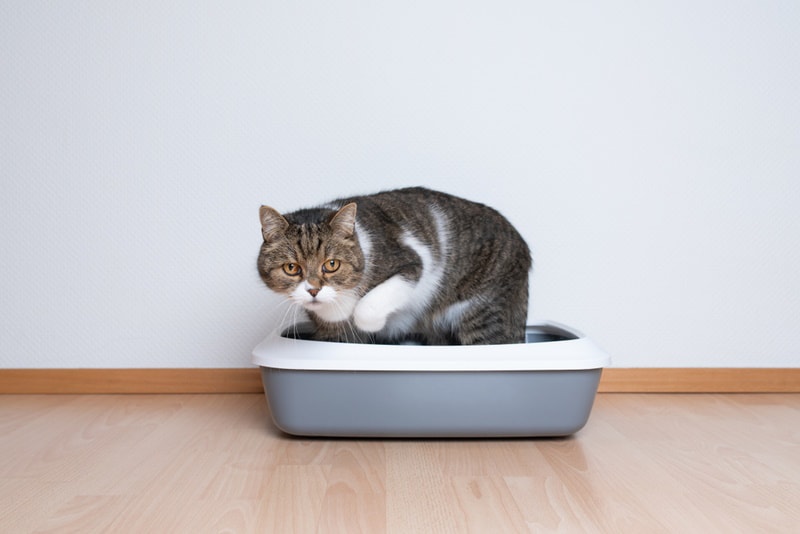
2. Timing Is Everything
As with kittens, the early stages of litter training involves timing. Determine when your cat pees and poops, so you know the times they need to go to the litter tray. Be observant of their behavior so you can learn the signs, especially after they wake up and after mealtimes.
At these times, watch your cat, and when you believe they are ready to go, lift them and put them in the tray. You might not get it right every time, but keep trying.
3. Reward Litter Tray Use
When your cat does use the litter tray, give them praise and offer them one of their favorite treats, but make sure they have finished their business and had the opportunity to cover it up with litter before you move towards them. Some cats hate to be disturbed, and if you interrupt every time your cat tries to pee in the litter tray, this might result in your cat concluding that the litter tray is a bad place to go and, of course, searching for alternatives.
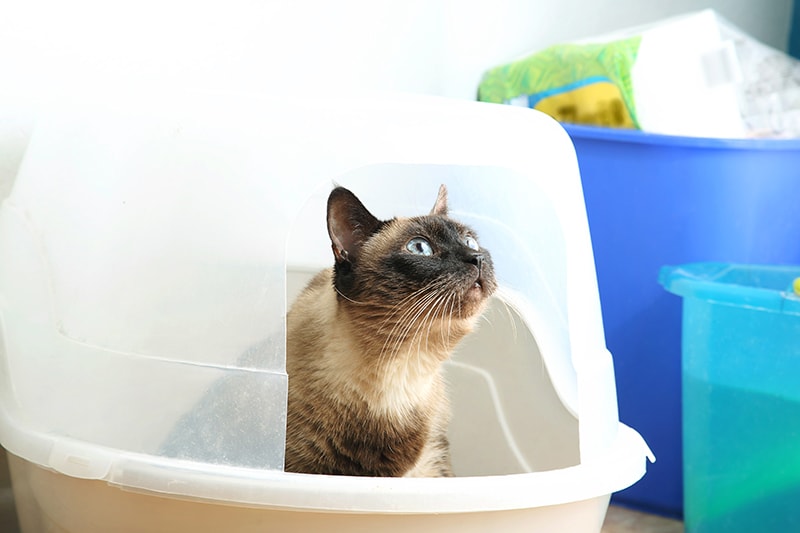
4. Don’t Punish Accidents
Bear in mind that your cat won’t be litter trained after a single successful use of the litter box. It might take weeks or even months before they go in the litter box every time. Accidents will happen, potentially even when you’re sure the training process is complete.
You should avoid scolding or punishing your cat. They may associate the scolding with peeing and pooping generally and will be more inclined to find peaceful places out of the way to do their business. Telling your cat off for going outside the tray could actually make the training process slower and more challenging.
5. Clear Up Accidents Quickly
If your cat does pee or poop outside the tray, while you shouldn’t scold them, you should clean the mess up quickly. Not only does this mean getting rid of the smell and mess, but it will also help with ongoing litter training.
Your cat will be able to smell its urine and feces and will associate that spot with being somewhere to do its business. By cleaning up the mess and using an enzymatic cleaner to really break the smell down, you can deter your cat from using the same place again.
Hepper Advanced Bio-Enzyme Pet Stain & Odor Eliminator Spray is our favorite all-purpose cleaner for pet messes. It permanently lifts the very worst stains and odors, making clean up and accident prevention a breeze. Hepper offers a 100% guarantee, which is a great bonus! Learn more about it here.
- ADVANCED ENZYMATIC CLEANER - Penetrates the most stubborn smells and stains at the deepest molecular...
- FOR ANY MESS, ON ANY SURFACE - This pet odor eliminator cleans your carpets, floors, furniture,...
- FRESH, NATURAL ODOR - Our unique formulation doesn't rely on dangerous or unpleasant chemical...
At PangoVet, we’ve admired Hepper for many years, and decided to take a controlling ownership interest so that we could benefit from the outstanding products of this cool cat company!
6. Clean the Tray Regularly
Cats are clean animals, and this also goes for their litter tray. Most cats will be reluctant to use a litter tray that is filled with poop and urine. Scoop solids out whenever you see them and give the tray a more rigorous clean once a day, cleaning the tray itself every week. If you use a clumping cat litter, it is easier to pick out litter that has been used.
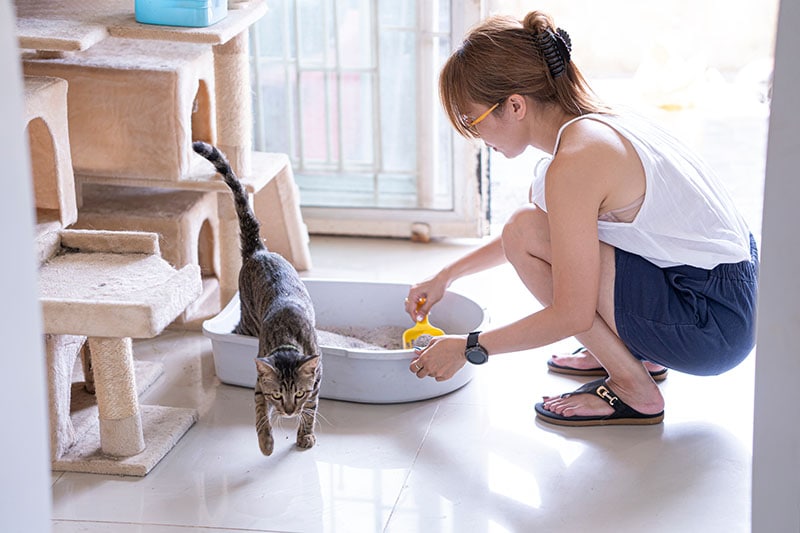
7. If in Doubt, Move It Around
Cats can be picky. Yours may not like the position of a litter tray if it is too close to people walking by, if there’s a bit of a draft, or if there is something nearby that puts them off. If your cat is essentially refusing to use a tray where it is, try moving it to a new location. If your cat is peeing in a specific spot outside the tray, try putting it in that spot and see if this encourages its use.
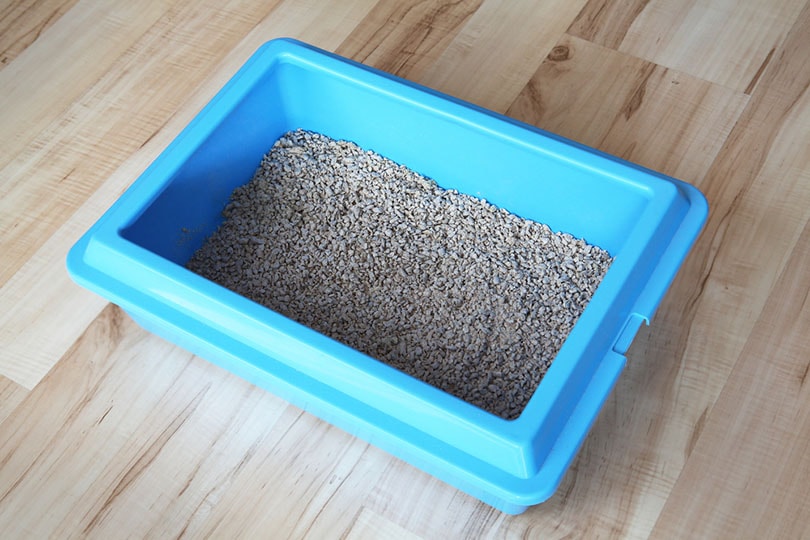

Can You Litter Train an Adult Cat?
Adult cats can be litter trained and the process is almost exactly the same as with a young cat. However, young cats do tend to learn more quickly which means it can take longer to train an older cat to use a litter tray. Be consistent, praise positive litter tray usage, and don’t scold your cat if they have accidents outside the litter box.
Why Has My Cat Stopped Using the Litter Tray?
There could be any number of reasons why a cat might suddenly stop using a litter tray. If you’ve recently changed litter, your cat may not like your latest choice. Consider any changes to the room you might have made. Inappropriate toileting may also be caused by illness, so you might need to take your cat to the vet to have them checked over.

Conclusion
Cats are clean animals, and they usually take quite quickly to using a litter tray, but younger cats adapt to litter tray usage more quickly than adult cats do. However, it is still possible to litter train an adult cat, consider an adequate setting to increase your chances of success. Especially with seniors, remember to create easy access. Expect that the process might take longer and be prepared for some accidents.
Clean the accidents up quickly but don’t punish your cat if they do happen, or you could force them to look for somewhere darker or more hidden away.
Featured Image Credit: New Africa, Shutterstock
Contents
- The 7 Tips for Litter Training an Older Cat
- 1. The Setup
- 2. Timing Is Everything
- 3. Reward Litter Tray Use
- 4. Don’t Punish Accidents
- 5. Clear Up Accidents Quickly
- 6. Clean the Tray Regularly
- 7. If in Doubt, Move It Around
- Can You Litter Train an Adult Cat?
- Why Has My Cat Stopped Using the Litter Tray?
- Conclusion
